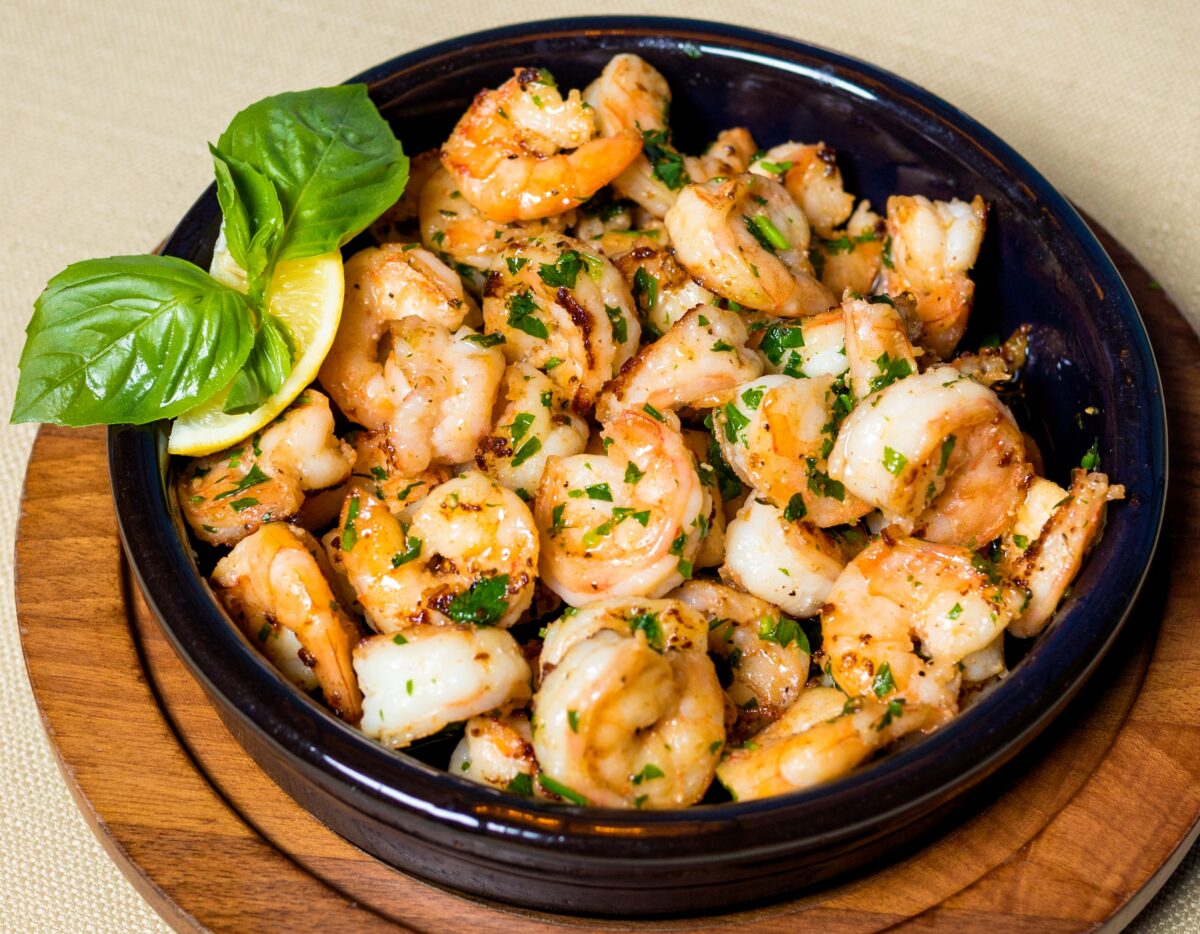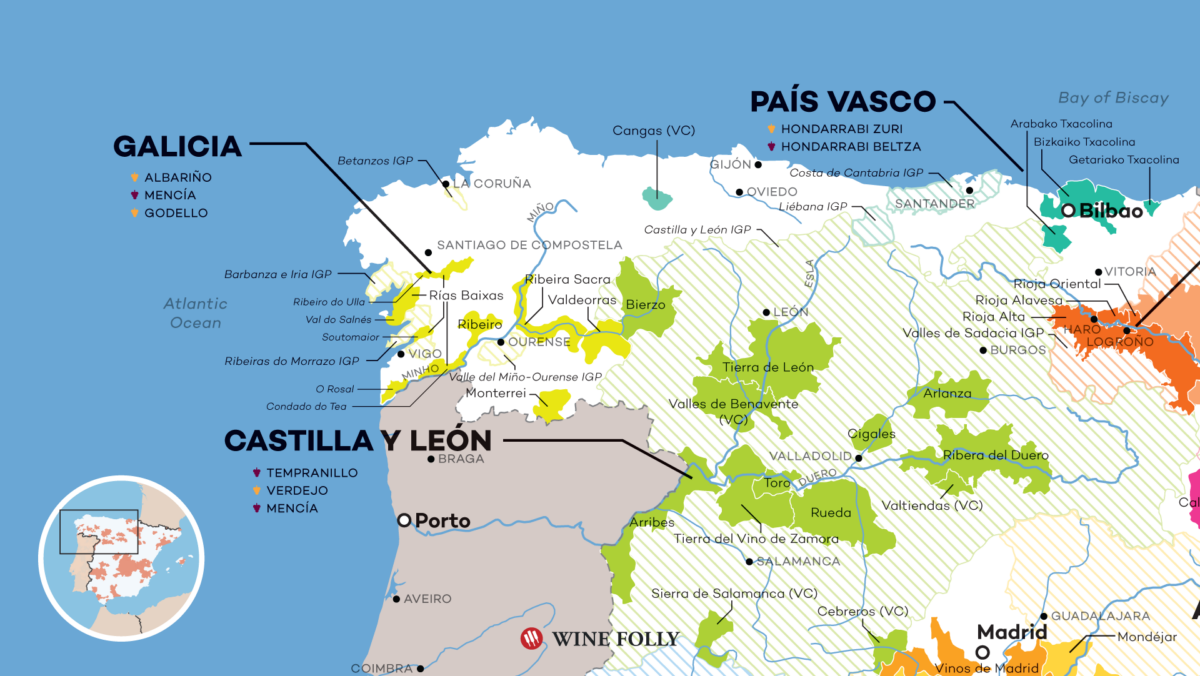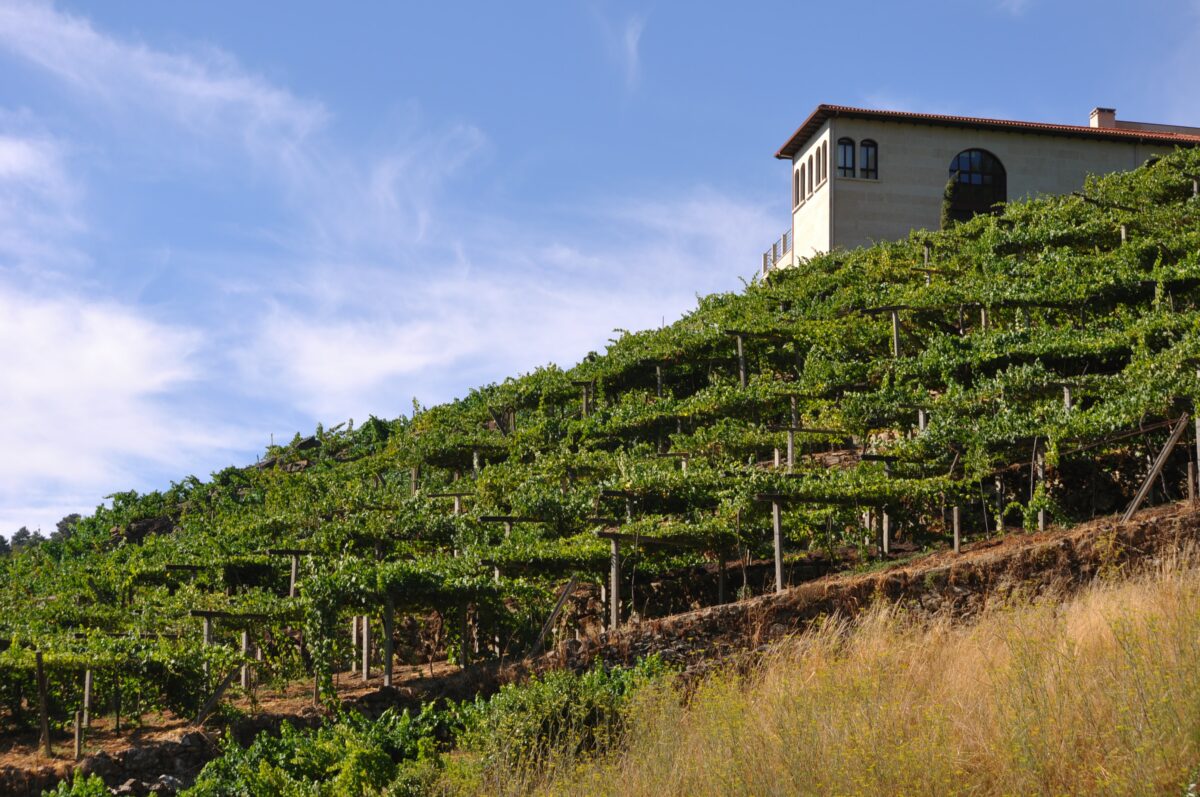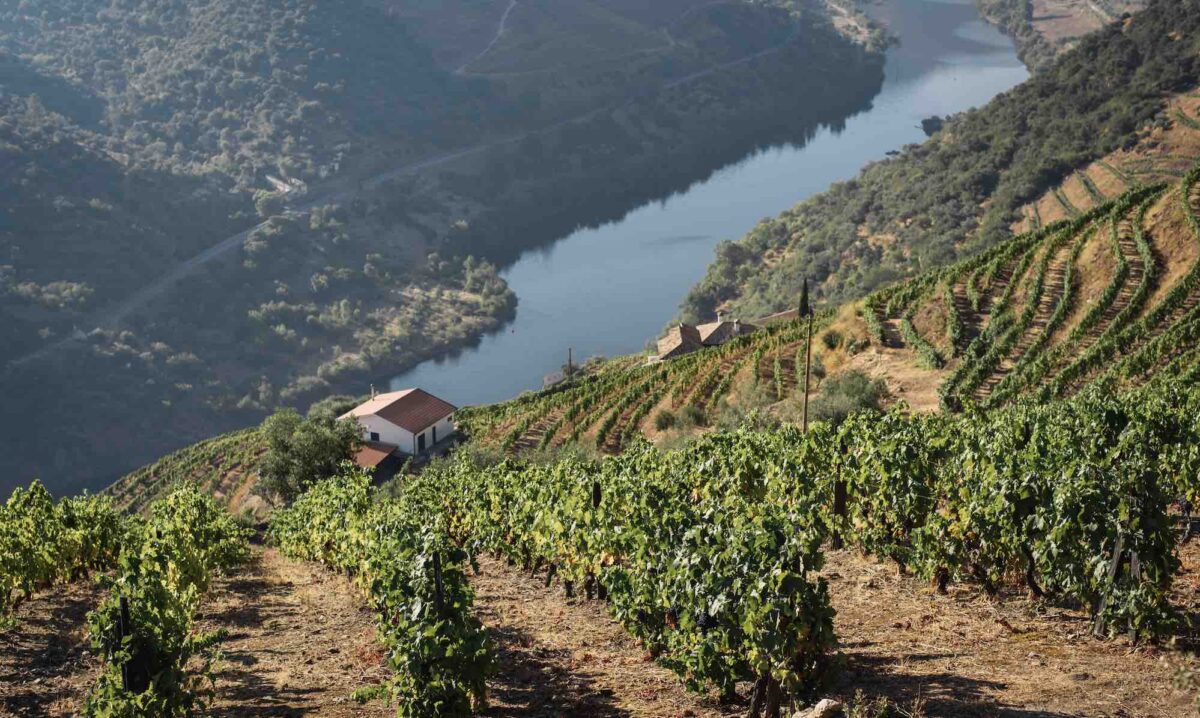Also known as: Gouveio, Verdelho du Dão (not the same as Verdelho from Madeira)
Table of Contents
Primary Flavors
- Grapefruit
- Lemon Zest
- Quince
- Crushed Gravel
- Saline
Taste Profile
On the nose, Godello is enticing, delivering aromas reminiscent of a quality Chardonnay. You’ll detect notes of green apple, pear, and citrus, with a backdrop of white flowers and fresh herbs. Its profile is sometimes enriched by light hints of vanilla or toasted oak, particularly when oak-aged, much like a well-made White Burgundy.
On the palate Godello carries a satisfying medium body and a silky, slightly creamy texture, not unlike an elegant Chardonnay. Its acidity ranges from medium to high, lending a refreshing counterpoint to its substantial body. While the aromas might hint at sweetness, Godello is most often vinified as a dry wine, displaying a balance and sophistication that fans of quality Chardonnay, especially White Burgundy, will appreciate.
How to Serve Godello Wine
Serve Godello slightly chilled in a white wine glass, without the need for decanting, allowing the engaging aromatic profile to shine. A white wine glass enhances Godello’s delightful scents for your enjoyment.
Typically, Godello wines should be enjoyed within a few years of purchase to retain their fresh, aromatic intensity. While some oak-aged examples may age well, their bright character is best when young.

SERVE
45–55°F / 7-12°C
GLASS TYPE
White
DECANT
No
CELLAR
3-5 Years
Godello Food Pairing
Godello pairs well with light proteins, grilled fruits, nuts, citrus, or herbs like coriander or fennel. Try grilled shrimp with a citrus-herb marinade, topped with toasted hazelnuts. These flavors highlight the wine’s fruity and slightly nutty notes.
Or, serve with roasted turkey, peach and fennel stuffing, and creamy polenta. The fruit and herb elements in this dish echo Godello’s rich, fruit-forward and balanced character.

5 Fun Facts About Godello
- Godello almost went extinct in the 1970s but was brought back to life thanks to the help of Horacio Fernández Presa, the “Father of Godello”.
- While most people associate Godello with Spain, it actually flourishes under the name ‘Gouveio’ in the high-altitude vineyards of Portugal’s Douro and Dão regions.
- Some Godello vines in Valdeorras are over 100 years old, clinging onto steep slate terraces.
- A few pioneering winemakers experiment with ‘sur lie’ aging for Godello, a technique where wine is left in contact with dead yeast cells for added complexity.
- Depending on the winemaking style, Godello can range from crisp and mineral-driven to lusciously full-bodied and oaked – similar to Chardonnay.

Where it Grows
With a little over 3400 acres of Godello cultivated globally, it’s among the less common grape varieties. It’s primarily found in Spain, particularly in the region of Galicia, with the Valdeorras and Monterrei denominations boasting the majority of plantings. Godello is also found in Portugal, often referred to as Gouveio.
- Spain: 2,031 acres (822 hectares)
- Portugal: 1,443 acres (584 hectares)
Total Vineyard Area – 3,474 acres (1,406 hectares) (data from 2016)

Spain
What to expect: Galicia, a verdant region in northwestern Spain, is a natural haven for the Godello grape due to its cool, maritime climate and diverse soil types. Godello thrives here, creating wines with a balanced interplay of crisp acidity and textured richness. The grape’s inherent adaptability to varying conditions allows for a wide range of expressions, from fresh and zesty to ripe and complex.
Valdeorras: This area within Galicia stands out for its production of Godello wines. The local granite and slate soils and cooler climate foster wines with pronounced minerality and vibrant acidity. Expect lively citrus, green apple, and pear on the palate, complemented by softer nuances of almond and herbs. These characteristics all come together to enhance the charm and complexity of Valdeorras.

Portugal
What to expect: Portugal’s diverse landscape and climate allow for an impressive array of indigenous grape varieties, one of which is Godello (aka: Gouveio). This grape thrives in various Portuguese regions due to the country’s multitude of microclimates and soil types. Gouveio produces wines that combine refreshing acidity with a rich texture, ranging from bright and crisp profiles to more opulent and complex expressions.
Douro: In this UNESCO World Heritage site, Gouveio finds an ideal environment for producing high-quality wines. The region’s schistous terraced vineyard contributes to the production of Gouveio wines with a notable minerality and concentrated fruit flavors. Expect vibrant notes of citrus, stone fruits, and green apple, balanced by underlying hints of almonds and floral elements.

In-Depth Knowledge
Embark on a journey to explore the fascinating history of Godello.
Godello’s Phoenix Moment
Godello, a native white grape variety of Spain, has a rich history dating possibly back all the way to the Romans. Yet, by the mid-20th century, it faced near extinction. As the wine market began favoring more internationally recognized varieties, Godello was sidelined, its plantings dramatically reduced.
The grape’s susceptibility to disease and difficulty in cultivation were additional challenges, leading many vine growers to favor more resilient, less demanding varieties.
The revival of Godello is largely credited to visionary viticulturists such as Horacio Fernandez Presa. Recognizing Godello’s unique potential, they undertook the mission to rejuvenate this ancient grape, focusing their efforts in the Valdeorras region of Galicia, Spain.
Thanks to their determination, Godello has experienced a significant resurgence, regaining its status as a distinguished varietal. Today, Godello is prized for its complex, mineral-driven wines that beautifully embody the essence of Spanish terroir.